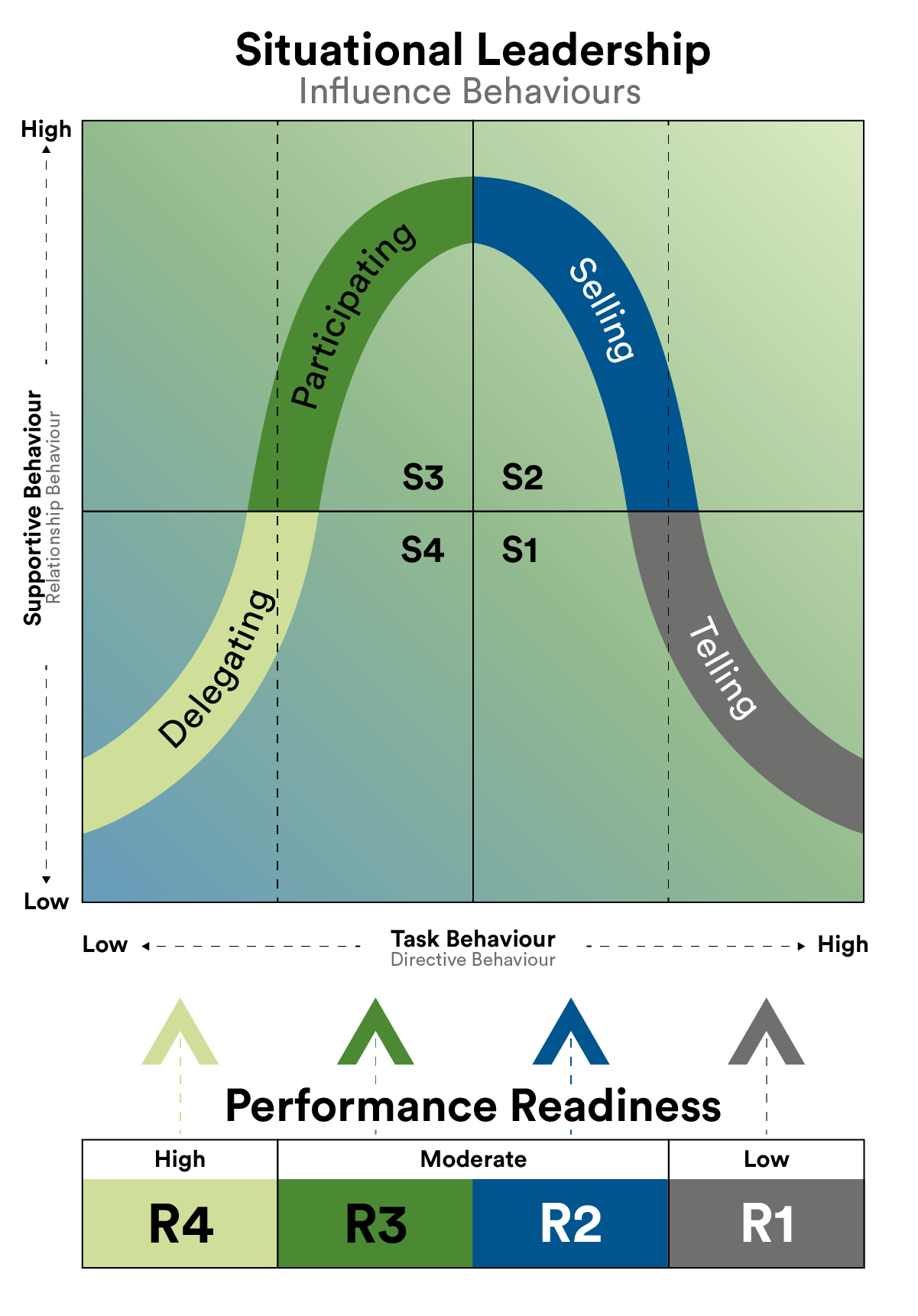What is Situational Leadership, and How Do I Apply it?
Leadership isn’t a one-size-fits-all approach. The best leaders adapt their style to suit their team’s needs, challenges, and growth stages.
Situational Leadership, developed by Paul Hersey and Ken Blanchard in the ‘70s, emphasises that no single leadership style is universally effective; leaders must be flexible and adjust their approach depending on their team’s competence and motivation.
In this article, we’ll break down situational leadership, explain how it works, and explore its advantages, challenges, and how it can be applied.
Quick links
- What is situational leadership?
- The situational leadership matrix
- How to apply situational leadership
- Advantages and disadvantages of situational leadership
- Examples of situational leadership in action
What is situational leadership?
Situational leadership is a model that helps leaders adjust their management style to fit the ability and confidence level of their team members. Instead of relying on a fixed approach, leaders use different behaviours based on the situation and the individual’s development level.

The model identifies four key leadership behaviours:
Telling (S1) – Directing and instructing
In this approach, leaders provide clear, specific instructions and closely monitor performance. It’s most effective for employees who are new to a task and lack both competence and confidence.
Selling (S2) – Coaching and persuading
Leaders use a more engaging approach, explaining decisions while encouraging input. This is ideal for employees who are motivated but lack the necessary skills to complete a task independently.
Participating (S3) – Supporting and encouraging
Here, the leader takes a collaborative role, allowing employees to take more responsibility while providing support and guidance. This works well for competent employees who lack confidence and need some encouragement.
Delegating (S4) – Trusting and empowering
At this stage, leaders take a hands-off approach, trusting employees to complete tasks independently. This is best for highly skilled, self-motivated team members.
The situational leadership matrix
The situational leadership matrix visually represents how leadership behaviours align with team members’ readiness levels. It helps leaders determine which approach to use based on an individual’s competence and commitment.
The matrix categorises employees into four development levels:

- D1 (Low Competence, High Commitment) → Needs Telling
- D2 (Some Competence, Low Commitment) → Needs Selling
- D3 (High Competence, Variable Commitment) → Needs Participating
- D4 (High Competence, High Commitment) → Needs Delegating
This structure ensures leaders can effectively guide their teams while fostering growth and autonomy.
How to apply situational leadership
Applying situational leadership effectively requires you to assess your team and adapt your approach accordingly.
Identify tasks and goals
Start by defining what needs to be achieved. This includes setting clear objectives for projects and tasks.
Evaluate individual ability and needs
Assess each employee’s skills, experience, and motivation. Understanding their strengths and weaknesses will help determine the most suitable leadership style.
Delegate tasks accordingly
Once you’ve evaluated your team, assign tasks based on their readiness levels. Less experienced employees may need direct guidance, while senior staff can handle more responsibility.
Offer support and feedback
Regular feedback helps employees grow. Leaders should provide constructive criticism, acknowledge progress, and offer guidance when needed.
Be flexible and adapt
Situational leadership requires continuous adjustment. As employees develop, leaders should shift their approach accordingly.
Advantages and disadvantages of situational leadership
Let’s take a quick look at the advantages and disadvantages of situational leadership.
Advantages of situational leadership
Flexible approach to leadership

Leaders can adapt their style to different employees and situations, ensuring effectiveness across various scenarios.
Encourages collaboration and positive relationships
By considering employees’ needs, leaders foster a supportive environment, improving morale and teamwork.
Easy to understand and apply
The model is easy to follow and can be used in different industries and workplace settings.
Boosts productivity and motivation
Employees receive the right level of support and autonomy, leading to improved performance and engagement.
Disadvantages of situational leadership
Can create confusion
Frequent shifts in leadership style may cause inconsistency, making it harder for employees to understand expectations.
Requires continuous effort from leaders
Leaders must actively assess and adapt their approach, requiring more time and effort than a blanket approach.
Teams may struggle with change
Some employees may find it difficult to adjust to varying leadership styles.
Focuses on short-term goals
Situational leadership prioritises immediate needs, sometimes overlooking long-term strategies.
Examples of situational leadership in action
Managing a Task-Based Team
A project manager overseeing a software development team might use different leadership styles depending on each team member’s experience. New developers would receive a Telling approach, while experienced staff work independently under a Delegating approach.
Helping an Underperforming Employee

A sales manager notices an employee struggling to meet targets. Initially, they use a Telling approach, setting clear guidelines. As the employee improves, they transition to Selling, explaining strategies, and later to Participating, encouraging independent decision-making.
Situational Leadership is a powerful tool for managers and leaders looking to optimise team performance. By adjusting leadership styles based on individual needs, leaders can effectively guide their teams, foster collaboration, and drive success.
While it requires effort and flexibility, the benefits make it a valuable approach in any workplace.
To find out more about careers at SEFE please visit our homepage.
The views, opinions and positions expressed within this article are those of our third-party content providers alone and do not represent those of SEFE . The accuracy, completeness and validity of any statements made within this article are not SEFE accepts no liability for any errors, omissions or representations.







